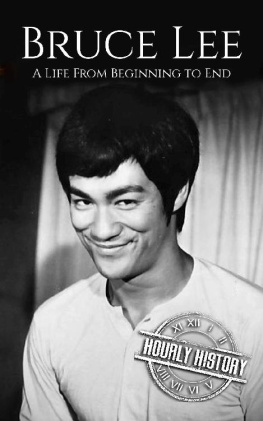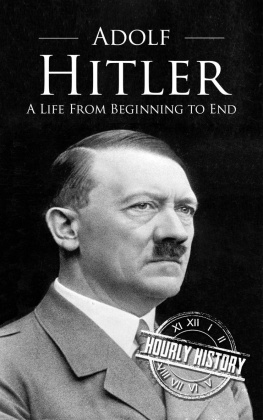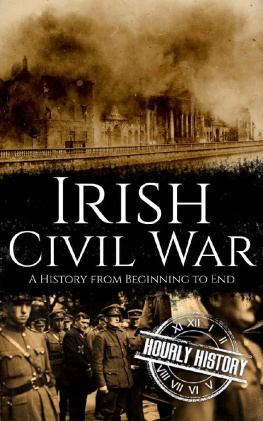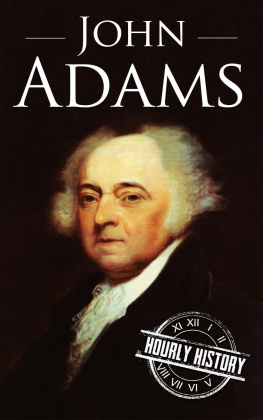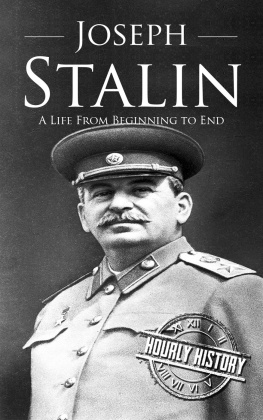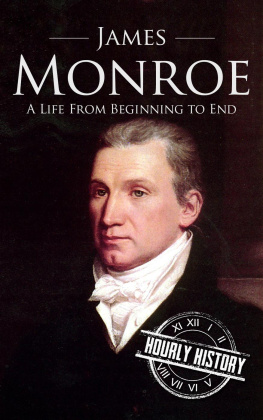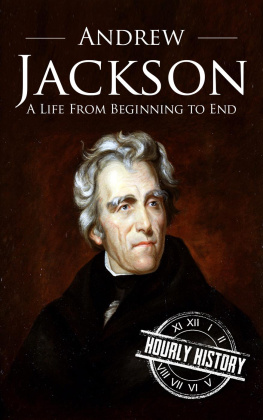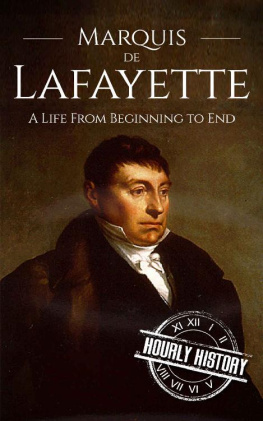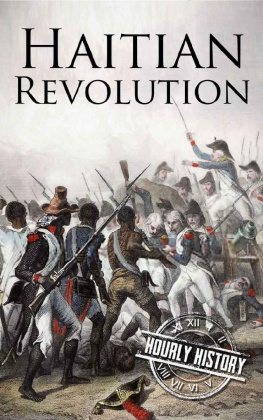Hourly History - Bruce Lee: A Life From Beginning to End
Here you can read online Hourly History - Bruce Lee: A Life From Beginning to End full text of the book (entire story) in english for free. Download pdf and epub, get meaning, cover and reviews about this ebook. year: 2018, publisher: Independently published, genre: Non-fiction / History. Description of the work, (preface) as well as reviews are available. Best literature library LitArk.com created for fans of good reading and offers a wide selection of genres:
Romance novel
Science fiction
Adventure
Detective
Science
History
Home and family
Prose
Art
Politics
Computer
Non-fiction
Religion
Business
Children
Humor
Choose a favorite category and find really read worthwhile books. Enjoy immersion in the world of imagination, feel the emotions of the characters or learn something new for yourself, make an fascinating discovery.
- Book:Bruce Lee: A Life From Beginning to End
- Author:
- Publisher:Independently published
- Genre:
- Year:2018
- Rating:4 / 5
- Favourites:Add to favourites
- Your mark:
- 80
- 1
- 2
- 3
- 4
- 5
Bruce Lee: A Life From Beginning to End: summary, description and annotation
We offer to read an annotation, description, summary or preface (depends on what the author of the book "Bruce Lee: A Life From Beginning to End" wrote himself). If you haven't found the necessary information about the book — write in the comments, we will try to find it.
Bruce Lee: A Life From Beginning to End — read online for free the complete book (whole text) full work
Below is the text of the book, divided by pages. System saving the place of the last page read, allows you to conveniently read the book "Bruce Lee: A Life From Beginning to End" online for free, without having to search again every time where you left off. Put a bookmark, and you can go to the page where you finished reading at any time.
Font size:
Interval:
Bookmark:
Copyright 2018 by Hourly History.
All rights reserved.
Born in 1940 in San Francisco, Bruce Lee spent his childhood in Hong Kong but became an adult in the United States. Lee brought his memories of the Japanese occupation of Hong Kong, his experiences fighting gangs on the streets, and his ambition for a better life with him on his long journey from east to west. Although driven and ambitious, Lee never excelled academically in the United States. Instead, he chose a different path and did no less than become an international martial arts superstar, breaking down racial prejudice as he did.
By the time Enter the Dragonone of the most popular kung fu movies in historywas released in the United States on July 26, 1973, Bruce Lee had already died. Lees short life, the many accomplishments he achieved during it, and his mysterious death are tied together in his memory. How could a young man at the peak of physical fitness, an actor whose star was rapidly rising, simply die? But as Lees wife, Linda Lee Caldwell, said, All these years later, people still wonder about how Bruce died. I prefer to remember how he lived.
Through his movies, Lee showed the world that a Chinese man could be fiercely proud of his image, more powerful than any white opponent, and be a sex symbol too. From his first feature movie as an adult martial arts star, Fist of Fury (1972), to his last, Game of Death (1978) released after his death, Lee showed the world something it had never seen before. His on-screen presence was revolutionary.
Off-screen Lee also blazed a new trail in martial arts practice, not only in the United States but around the world. With his signature Jeet Kune Do technique, Lee challenged the authority of traditional forms of martial arts and urged his followers to seek their own truth. His philosophical advice to be like water continues to inspire people in all aspects of their life. Lee urged, Dont get set into one form, adapt it and build your own, and let it grow, be like water. Empty your mind, be formless, shapelesslike water. Following his own advice, Bruce Lee became an icon whose influence continues to adapt and grow, even after death.
Bruce Lee entered the world marked with prophetic expectations. Born on November 27, 1940, Lee was a gift of the Chinese zodiac year of the Dragon. The other eleven zodiac symbols are represented by animals; the Dragon is the only symbol that is supernatural. The fifth zodiac sign, the mythic Dragon is believed to represent auspicious power, the gift of good fortune. Those born in the year of the Dragon are said to be potent, powerful, brave, and yet kind.
Although Lee was Chinese, he was born in the United States. His father, Lee Hoi-chuen, was a famous opera singer and was performing in San Francisco at the time of his sons birth. Bruces mother, Grace Ho, was the adopted daughter of prominent Hong Kong businessman Ho Kom-tong. The Kom-tongs were one of the most powerful clans in Hong Kong, and Lee grew up with the protection of wealth and high status surrounding him.
Graces biological parentage has been the subject of speculation. It is thought that Grace was multi-racial, with a white European father and Chinese mother. Pregnant with Lee and already the mother of three children, Grace Ho joined her husband on his year-long opera tour of the United States. As a result, Lee entered the world at the Chinese Hospital in San Franciscos Chinatown. The Lee family lived in the U.S. for the first few months of Lees life before returning to Hong Kong where he remained until he was 18.
Lees siblings were Phoebe Lee, Agnes Lee, and Peter Lee. The final and fifth child, Robert Lee, was born after Bruce. The name Bruce was not given to Lee by his parents who gave him the traditional Cantonese name Lee Jun-fan. A dubious story about the origin of Lees name is that the America doctor attending to Lees birth first referred to him using the English name Bruce. As the other Lee family children also had English names, the Lee family chose to keep it.
Cantonese naming practices can appear complex to outsiders. Lee had essentially four different names. His birth name, Lee Jun-fan, meant to return again. Grace had a deep respect for the power of destiny and chose this name because she believed it was Lees fate to return to the United States. Lees clan name was Lee Yuen-cham, but he also used Lee Yuen-kam during his studies and Lee Siu-lung as his Chinese screen name. Siu-lung translated to English means little dragon.
The Lee familys decision to return to Hong Kong in early 1941 was unusual. Many of Lee Hoi-chuens peers took the opportunity to remain in the United States, where they believed they were safe from the turbulent events taking place in East Asia during World War II. Within months of the familys return to Hong Kong, Japan invaded the region which was a British colony at the time. The governor of Hong Kong officially surrendered the territory to Imperial Japan on December 25, 1941. The Lee family, alongside the one and a half million people of Hong Kong, spent three years and eight months as the colonial subjects of the Empire of Japan. The period of time, three years and eight months, written in Cantonese later became a metonym for the occupation itself.
The Lees lived in the Kowloon district of Hong Kong. Kowloon is located at the southern tip of the Chinese mainland; the now more westernized main island of Hong Kong is accessible from Kowloon via Victoria Harbour. Lee grew up in a two-room apartment above a row of shops at 218 Nathan Road, Kowloon. During the Japanese occupation, a military base was located across the street from the home, and Lee spent hours insulting the forces from his balcony. The oppressive atmosphere of the Japanese occupation kept Bruce at home during his early years. As soon as the British again took control of Hong Kong, Lee jumped at the opportunity to explore his city.
After the Japanese occupation, Lees father Lee Hoi-chuen was able to restart his career as an opera singer and actor. When he wasnt touring with his opera company, Lee Hoi-chuen rehearsed and performed in music halls and opera houses around Hong Kong. Young Bruce would often go with his father to watch him rehearse. Hanging around the music hall, Lee met another young boy whose father was an actor. Siu Kee Lun, who later adopted the stage name Unicorn, was a few years older than Lee but the pair soon became close friends. It was around this time that Lee began acting. Introduced to the screen by his father, Lee performed in as many as twenty movies during his childhood and teenage years. His earliest performancetook place back in 1941 when he was featured as an infant in Golden Gate Girl. From age six, Lee started appearing on screenagain, this time in small acting roles for films such asSai See in the Dream (1949), The Kid (1950), and In the Face of Demolition (1953).
At age 12, Lee began attending La Salle College. A product of his mothers European ancestry, Lee was raised Catholic. Like many young teenagers, Lee bristled against authority and developed a reputation as a troublemaker. Ordinary territorial spats between Chinese boys at La Salle College and European boys at nearby King George V school escalated into street fights that Lee often found himself at the center of. In Hong Kong, street fighting was illegal but common. Lees acting background, relative wealth, and reputation for trouble made him the target of local gangs. In 1953, aged 13, Lee was badly beaten by a local street gang; an incident later referred to as the first and last time Bruce Lee lost a fight.
Font size:
Interval:
Bookmark:
Similar books «Bruce Lee: A Life From Beginning to End»
Look at similar books to Bruce Lee: A Life From Beginning to End. We have selected literature similar in name and meaning in the hope of providing readers with more options to find new, interesting, not yet read works.
Discussion, reviews of the book Bruce Lee: A Life From Beginning to End and just readers' own opinions. Leave your comments, write what you think about the work, its meaning or the main characters. Specify what exactly you liked and what you didn't like, and why you think so.

